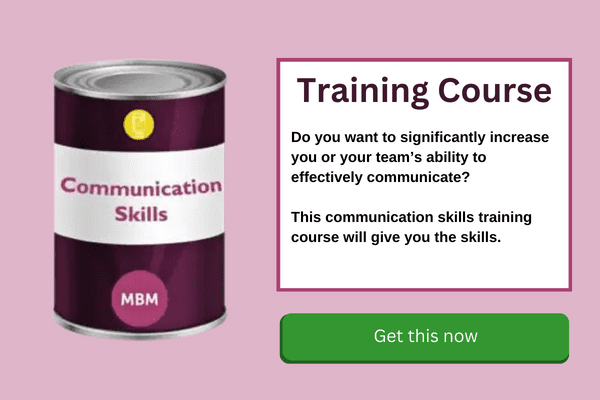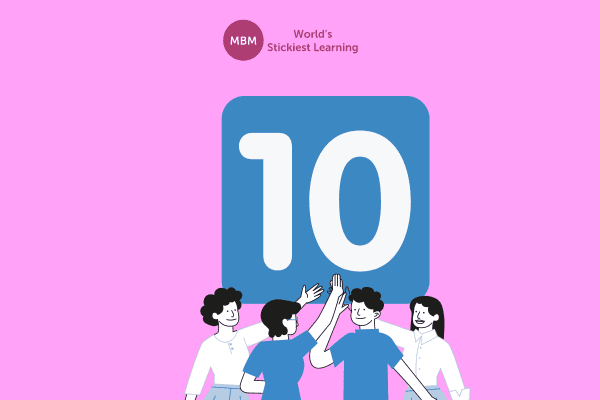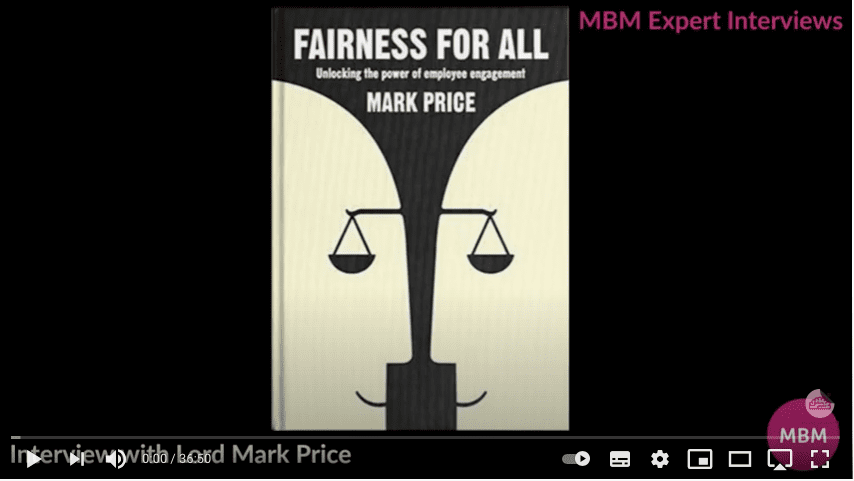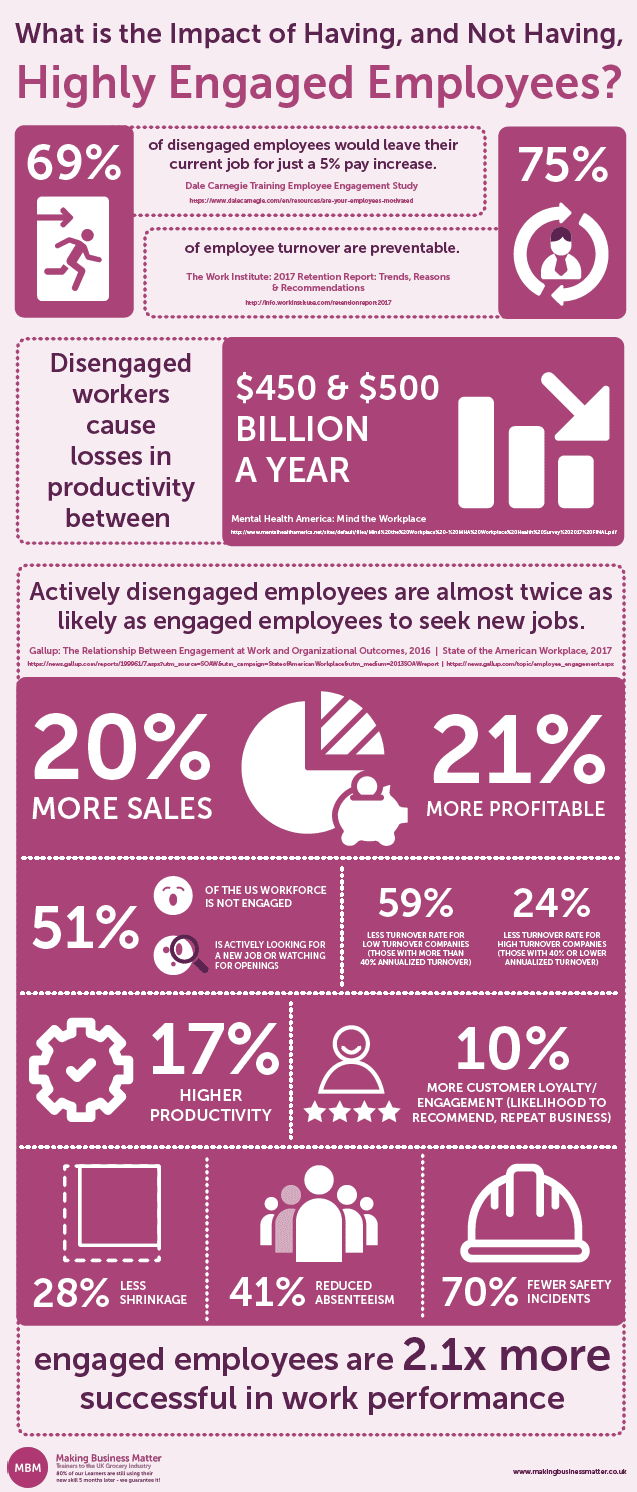Understanding Motivators for Employees Can Boost Every Business – Including Yours
Motivators for employees are about much more besides money, which can prove short-lived in its effect. In fact, Reward Gateway’s 2019 study found nearly 60% of employees would prefer regular praise and thanks, to a 10% pay increase with no recognition. Moreover, in other research, other more intangible motivating factors such as meaningful work, responsibility, opportunities to progress, work relationships and work-life balance are consistently high scorers across the piece.
Here’s another consideration. Finding good people and keeping them motivated is more important than ever in the current economic climate. In fact, the cost of training people and then having to replace them is a drain on companies’ resources that businesses don’t think about nearly enough.
So Let’s Put That Right. In This Article, We Look at:
- First, what is the best motivator for your employees?: Incentives firm Worktango say it’s recognition. Find out what they mean.
- Then what motivators for employees are there besides money? Money can lose its effect over time, but there are intrinsic motivators in the work itself.
- What are the top 3 motivators for employees? Sirota’s Three-Factor Theory of Human Motivation in The Workplace says they’re equity, achievement, and camaraderie.
- What are your 3 biggest motivators? Understanding the psychology: Maslow’s Hierarchy of Needs: Herzberg’s and David McClelland’s Motivation Theories.
- What are the 5 motivations? Two motivations McClelland missed – adventure and security.
- Top motivators for employees in smaller businesses.
- What are the top 10 motivational factors for employees in bigger companies?
- What are the top motivators overall? Morgan McKinley’s 9 key components contributing to motivation.
- At the end, we also look at why motivators for employees matter and how to measure it and offer 12 tips for instant motivation, based on proven examples, that you can put in place in your business relatively cheaply.
So, let’s get started!

What Is The Best Motivator for Your Employees?
The best motivator for employees is recognition, according to the incentives firm Worktango. Even more, they quote figures showing that 4 out of 5 employees feel inclined to work harder when bosses show their appreciation. Here are 5 ways to do it:
- Private recognition.
- Public recognition: ‘Employee of the month’ or praise in front of colleagues.
- Perks, benefits and rewards: Vouchers or goods.
- Flexible working arrangements/opportunity to work from home.
- Free or subsidised meals, fruit or drinks.
The last two measures might seem trivial, but even little things can make a big difference to how people feel about working for a business.
What Motivators for Employees Are There, Besides Money?

Here’s the thing. External motivation is all about external rewards, but their effects can be short-lived. By contrast, internal, or “intrinsic,” motivation lasts longer. It’s based on the personal rewards we get from work, such as a sense of achievement, pride in our performance, and creative fulfilment.
Here are three instances of the limitations of external motivation you need to consider:
Sticky Learning ® is 7 times more effective than 1-day training courses. Plus, you will get a Chain of Evidence proving your Return on Investment. Discover soft skills training that changes behaviours long term.

Short term:
Spurring people to action with money isn’t sustainable. Motivation dies as soon as the rewards stop.
Levelling off:
If the reward level remains the same, its effect on motivation wanes. So you have to make the rewards more enticing, to continue being motivating.
Motivational clashes:
Earning bonuses can weaken employees’ motivation to carry out activities that are already intrinsically rewarding.
What Are The Top 3 Motivators for Employees? Exploring Sirota’s Three-Factor Theory of Workplace Motivation
Why do people so often start new jobs eager to contribute, then lose motivation? To address this, Dr. David Sirota, an organisational researcher and consultant, explored ways of keeping employees motivated based on worldwide surveys of over four million workers. Notably, he set out his findings in his 2005 book, The Enthusiastic Employee.
Sirota’s Three-Factor Theory of Human Motivation in the Workplace is based on these key principles:
- The business’s goals should not conflict with the workers’ personal goals.
- Workers have basic needs that employers should meet.
- Staff enthusiasm is a valuable source of competitive advantage.
Specifically, Sirota’s three motivating factors are:
- Equity/Fairness: People expect to be treated fairly.
- Achievement: They want to do important, useful work, and be recognised for it.
- Camaraderie: People want to enjoy good relationships with co-workers.
Interestingly, workplace camaraderie is at a premium these days, thanks to increased remote working since COVID-19. We’ll come back to this. But first…
What are YOUR 3 Biggest Personal Motivators?

Individuals’ motivators at work vary hugely. Experts have come up with many theories about what makes us tick. So here are three to consider:
#1- Maslow’s Hierarchy of Needs:
In ascending order, these are Physiological (food and clothing), Love and belonging (friendship), Esteem (recognition), and Self-actualisation. So, a job must provide the basic needs first before people can move up to the more advanced ones. The higher needs provide scope for self-improvement, personal development, and growth.
Related: Read more on Maslow’s Hierarchy of Needs.
#2- Herzberg’s Motivation Theory:
This states that most people can work much harder and smarter than they usually do, and motivation can boost performance impressively. Herzberg’s motivators include achievement, recognition, interest in the work, responsibility, and opportunity for growth.
Related: Read more on Herzberg’s Motivators.
#3- David McLelland’s Motivation Theory:
Developed in 1961, this suggests that the following three needs motivate everyone at work:
- Achievement
- Affiliation
- Power
So let’s look at how employers can address them:
Achievement:
Set challenging but attainable goals, provide regular feedback and recognition, and link employees’ achievements to the business’s goals. They should back this up with skill development and opportunities for advancement and job enrichment.
Affiliation:
Help employees to feel part of a team, and enjoy positive work relationships, social interaction, and connection.
Power:
Give people leadership or decision-making responsibilities. Also, support them by delegating authority, and letting individuals develop.
What Are The 5 Motivations? Two Motivations McClelland Missed…
Some commentators add two more motivations to McClelland’s three needs:
Firstly, there is Adventure: These individuals thrive on risk, challenge, and uncertainty. They include entrepreneurs and freelancers.
On the other hand, there is Security: In contrast to adventurers, these people desire continuity, consistency, and predictability in their job, work, and pay. They prefer to stay for the long haul.
What Are The 5 Key Motivators for Employees? A Quick Recap
Summing up what we’ve covered so far, talent services company Morgan McKinley reckons the 5 key motivators are:
- Meaningful and challenging work.
- Workplace wellbeing: Feeling supported and encouraged as an individual.
- Recognition for performance.
- Compensation and benefits.
- Work culture.
Hence offering all this will make staff feel motivated, passionate, and loyal.
Things Have Changed Since COVID. Here’s How Companies Are Motivating Their Employees These Days
Remote working has reduced social contact in the workplace, and hence the amount of camaraderie people feel, which as we saw is one of Dr David Sirota’s three main motivating factors. Even so, employers can still take positive action to make people more enthusiastic. Here’s how:
10 Top Motivators for Employees For Smaller Businesses
Squareup.com suggests these 10 ways for smaller businesses to motivate their teams:
- Make your business a pleasant place to be.
- Be a respectful, honest and supportive manager.
- Offer rewards like quarterly bonuses and paying for training courses.
- Give people room to grow.
- Share positive feedback.
- Be transparent about how the business is doing.
- Offer flexible working.
- Give out free food and snacks.
- Recognise individual achievement.
- Ask people what they think will motivate them to succeed.
What Are The Top 10 Motivators For Employees in Bigger Businesses?

Larger businesses can become great places to work, by addressing the different employee motivators the experts have identified. Writing on businessleadershiptoday.com, Matt Tierney identifies the following, which touch on ideas we’ve covered so far:
- Meaningful work
- Leadership
- Organisational culture
- Paths to advancement
- Professional development opportunities
- Recognition
- Work environment
- Flexibility
- Belonging
- Work/life balance
So let’s unpack these:
Factor #1: Meaningful Work:
Over the last 30 years, say McKinsey & Company, American workers have identified meaningful work as the most important aspect of their jobs. In fact, it comes out ahead of income, job security, and the amount of hours they work. In this context, “meaningful work” means work that:
- Has a purpose and creates impact.
- Accomplishes goals and makes a difference.
The other drivers Tierney identifies are…
Factor #2: Leadership:
Leaders and managers need to:
- Create an atmosphere of trust.
- Check in to find out what people need to do their work.
- Enable the other employee motivators (see below) to come into effect.
- Talk to team members about how they can make more impact.
- Facilitate people’s growth.
Factor #3: Organisational Culture:
Individual employees need to:
- Understand the “how” and “why” of their job, and where it fits into the business.
- Feel personally accountable for their work.
Also, leaders need to establish and clarify norms of behaviour and performance and set an example.
Factor #4: Paths to Advancement:
Individual employees need to:
- Feel they’re advancing in their career.
- Have new challenges, and see a future.
Factor #5: Professional Development Opportunities:
Leaders and managers should offer:
- In-person or online training.
- Development coaching.
- Time at work for learning.
- Reimbursement for other tuition.
Factor #6: Recognition:
Leaders and managers need to:
- Recognise individual and group effort.
- Celebrate achievement.
Factor #7: Work Environment:
This involves leaders and managers:
- Making everyone feel empowered and supported in an inclusive culture.
- Addressing conflict promptly, before the environment becomes toxic.
Factor #8: Flexibility:
In the post-Covid era, leaders and managers need to give people flexibility to work from elsewhere. So give them the freedom they need.
Factor #9: Belonging:
Leaders or managers need to:
- Make people feel psychologically safe and supported, knowing they won’t be punished for asking questions, raising concerns, or voicing ideas.
- Ensure staff feel comfortable bringing their authentic selves to work.
Factor #10: Work-Life Balance:
Last but not least, leaders and managers need to encourage people to:
- Manage their non-work life and at-home priorities more effectively, while meeting work obligations and growing professionally.
- Disconnect from work emails, texts etc after working hours.
What are The Top Motivators for Employees Overall? Here Are Morgan McKinley’s 9 Key Components Contributing To Motivation

As we said earlier, people don’t show up every day and stay in a job just for the money. So, how does salary come into it as a motivator for employees? Well, here’s Morgan McKinley’s take:
- Salary: In the longer term, salary doesn’t increase performance. In fact, a pay rise only has a temporary impact.
- Non-financial rewards: These help fulfil the objective at a relatively low cost because they:
-
- Acknowledge extraordinary performance
- Recognise achievement
- Increase morale
- Create a positive work environment
- Improve performance
- Co-worker relationships: Stimulate closer cooperation by focusing on team building.
- Positive relations with leadership: Encourage line managers to do more to appreciate their people’s needs.
- Company culture: Helping team members to understand and believe in the company’s goals leads to greater job satisfaction. What’s more, it results in more positive attitudes and greater commitment.
Our Personal Lives Affect Our Motivation Too
When you turn up to work, you’re expected to bring your whole self. But it’s not always easy. Next on the list…
- Personal life: How we feel day to day is probably the single biggest factor impacting motivation. Additionally, here’s the thing. Bensinger, DuPont & Associates found that under half (47%) of the employees they polled said problems in their personal lives affected their work performance. Specifically, they impacted concentration, attention, and engagement, and led to absenteeism. Therefore, support, understand, and guide employees in difficult times, and you’ll build their trust and loyalty. Furthermore, they often come back stronger and more committed.
- Learning and development opportunities: The top level in Maslow’s Hierarchy, self-actualisation is a natural by-product of high work performance. Most employees want to feel they’re achieving their full potential. So, educating and guiding them will help staff develop and progress.
- The company’s processes: These can be enough to make people leave! So make sure they’re agreeable and logical.
- Performing meaningful work: As we said before, this is motivator #1 in Matt Tierney’s list for bigger businesses. In fact, it’s a key component in Morgan McKinley’s list, too.
So, Why Do Motivators for Employees Matter?
All in all, they make employees more productive and drive profitability. Additionally, Gallup Workplace’s Chief Scientist Dr. Jim Harter wrote on Gallup.com in 2022 that businesses have more success with engagement and improve their performance when they treat employees as stakeholders of their and the company’s future. Hence, companies should focus on “concrete performance management activities.” Furthermore, he suggests these include:
- Firstly, clarifying work expectations.
- Providing people with opportunities to do what they do best.
- Giving them the resources to do their job.
- Offering scope for professional development.
- Promoting positive co-worker relationships.
It Comes Down To This – Motivators for Employees Deliver The Results
Gallup’s Dr Jim Harter says motivated workers are:
- More likely to show up to work, be more present, and do more.
- More productive.
- Committed to quality and safety.
- Keen to improve customer relationships.
- More likely to stay with the company.
Furthermore, Harter writes that Gallup’s State of the Global Workplace 2022 report says 2 out of 3 employees in the US workforce aren’t engaged. So we’ll look later at how big companies can monitor employee motivation. All in all, it comes down to listening to your people.
Take These 5 Steps To Make Your Employees More Engaged
Gallup Workplace’s Dr Jim Harter suggests the following:
- First, create a culture of engagement, starting at the top.
- After that, prioritise employee engagement as a competitive, strategic point of difference.
- Overall, communicate openly and consistently.
- Hold managers responsible for engaging employees, from the first minute of their first day.
- Finally, use the right metrics to measure employee engagement.
So, What Metrics Will Help You Find The Best Motivators For Your Employees?
Well, there are various ways big companies can check which motivators work for their employees:
- Employee feedback surveys: These surveys typically consist of structured questions.
- Pulse surveys: Short, frequent surveys to get quick feedback.
- Feedback forms: Give them a chance to say what they think.
- Data analysis: Spend time looking at what the data is telling you.
As we said, it’s about listening to your employees, whatever size your business is.
AND FINALLY: 12 Tips For Instant Motivation: What Motivates You, And How Have You Motivated Others?

As promised at the start, here are some proven employee motivators you can put into effect quickly and cheaply.
12 Tips for Instant Employee Motivation:
- First, talk to your team about what interests them in their work.
- Next, create a comfortable and engaging work environment.
- Importantly, assign people to projects that you know will stimulate them.
- Also, celebrate birthdays and milestones like long service.
- Reward people with training or development.
- Encourage creative thinking and problem-solving.
- Recognise high-achieving individuals.
- Do team-building and group social activities.
- Promote well-being monitoring and self-care.
- Encourage people to take breaks from their desks and walk around.
- Give people who do well, additional paid time off, but be sensitive to the others.
- Okay, so we said motivation isn’t about the money, but… You could always give them a pay rise!
Fairness For All: About the Book
Overview
As someone from the world of Grocery, Supermarkets, and interested in why a promotion is on a gondola end (!), I probably would find this book engaging. In fact, I really did! I have also recently become interested in employee engagement, as part of training, and I had not expected such a voice of reason on the topic. Almost a lone voice on the subject. Someone from my industry waving the flag very vigorously for employees being happy. You can almost expect people to make fun. ‘Happy employees’. Yet Mark absolutely believes it and by the end of this book, you will too.
John Spedan Lewis Led the Way
I should have known. I did not, the history of Waitrose. One of the great companies that have made Britain Great. John Spedan Lewis, elder son of John Lewis joined the business at 19 and in 1914 assumed control of Peter Jones in Sloane Square, London. On his father’s death, he formed the John Lewis Partnership and began distributing profits among its employees in 1929. He transferred control of the company to the employees in 1950 and resigned as chairman in 1955. Unbelievable, and certainly a visionary of his time.
My reason for sharing his ethos was because Spedan was so forward-thinking and employee-centric for his time, that you can imagine other Victorian CEO’s laughing at him. The ethos that he created is the DNA of The John Lewis Partnership. Furthermore, it comes through Mark’s writing as if it were the only way. The gospel according to. Maybe it should be the only way because the JLP is certainly successful, and whilst employee engagement might be a modern fad, the JLP guys have made it work for over a century. Whereas others only speak of it and still fail. So, shouldn’t we at least understand what they have done, why it has worked, and adapt it for our company?
Win: Win
Mark’s philosophy was also formed from his father, who taught him that all people are born equal, but with different and unique skills & abilities. He taught Mark that ripping-off customers for a short-term benefit was not the recipe for long-term success. You could almost say that Mark’s father sowed the seeds of the right business principles, and Waitrose was just the right soil to make them grow. Had Mark started at Tesco things might have been a different story. Mark chose the right company to shape his career.

3 Pieces from the Book That Have Particularly Stayed with Me
‘A company that a generation ago had, say, profits of £10, would have paid out £1 to shareholders and retained £9 to invest in the future. Today they pay out £6 and retain £4. You don’t need to be an economics expert to understand that this is unsuitable in the long term’. Marks’ view is spot on and a worrying concern for future commerce.
A wonderful story about Mark having attended various business schools. After a number, he found the courage to raise his hand. In a room full of CEO’s the debate was around their purpose. They all said to make money. Mark said it was to make employees happy. I’m sure Mark would love to be compared to Spedan. A modern Spedan.
‘Employee engagement is the new battlefield for real competitive advantage’. Like customer service is the battleground of the top mobile network companies, or the energy companies, employee engagement, I believe, is here to stay. Furthermore, EngagingWorks (Lord Price’s company) will be in much need in the future.
Lord Price’s facts for supporting employee engagement are wonderfully relentless. For example, A Hewitt Employee Engagement Report found that in a company where 60-70% of the employees were engaged, the average shareholder return was 24%. In a company with 40-60% engagement, the return was just 9%. The facts are indisputable.
The 6 Elements of Happy Employees
These 6 elements provide a great yardstick to measure and focus:
- Reward and Recognition.
- Information.
- Empowerment.
- Well-being.
- Instilling Pride.
- Job satisfaction.

Final Thoughts on Fairness For All
If you are involved in HR, work in the Grocery Industry, or manage/lead people, you should read this book. You will see leading and managing people in a whole new light. I imagine that Mark is frustrated because it is so clear to him. I am beginning to see the light and as a business owner and, as a training provider, that is important.
Again and again, Mark competently argues the case for looking after your employees. Supported by facts, case studies, his own wealth of experience, and the groundwork laid by Spedan Lewis; would you argue the case for not making your employees happy?
Now the last part I’d like to leave you with is that the book talks of, ‘there are too many people checking the checkers of the checkers, rather than investing time and money into helping them be great at what they do’. A great thought for all leaders and managers.
Watch our Interview with the Author HERE

What is the Impact of Having, and Not Having, Highly Engaged Employees? Infographic

All In All, It Pays To Reflect on Motivators for Employees
So, we hope this article has convinced you it’s worth reflecting on this stuff, and how to implement it in your business. After all, in today’s work environment, it’s more important than ever to keep good people and bring them on. Additionally, you can’t afford to lose them, so thinking about these motivators will help get it right. Moreover, when you go for an interview for a managerial position, tell them how you’ve motivated others and your ideas about employee motivators.
So thinking about all this can help you, your company and your career. Good luck!




